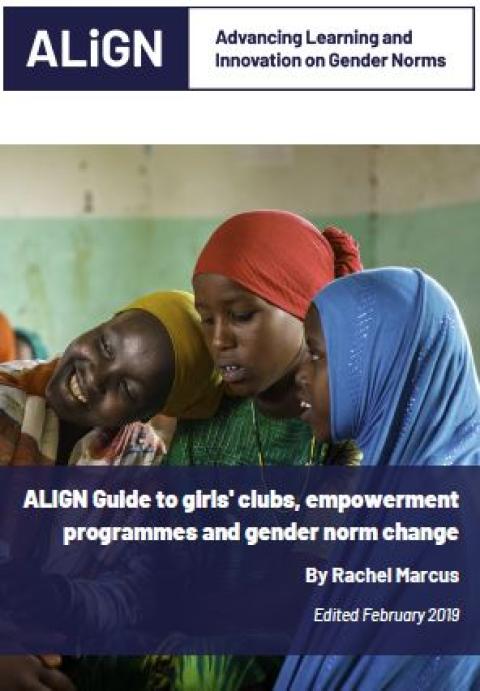- ALIGN guide
- 1 février 2019

Girls’ clubs (and mixed-sex youth development clubs) are becoming increasingly common as a route to girls’ empowerment, as they help young people build skills, knowledge, self-confidence and social networks. These groups typically aim to achieve these goals by providing non-formal education in small, often single-sex peer groups, most commonly in a community setting. The groups are led by a trained mentor and, increasingly, in schools settings, by teachers. In both cases, it is hoped that the mentor can act as a role model to encourage girls to envision a better future. There is strong evidence that these clubs contribute to positive gains in knowledge, skills and self-confidence, and a smaller body of evidence that they contribute to leadership skills and can be a springboard for civic action.
But how far do they contribute to gender norm change? Does the focus on individual empowerment limit their contribution to broader norm change in society? What aspects of programme design or implementation contribute most to these clubs becoming agents of change? There is considerable diversity among girls’ clubs and youth development clubs, and this thematic guide will unpack the evidence on different types of clubs, different programme designs, and different activities and approaches to engaging with the wider community. It will also outline what is known about running programmes of this kind at scale, and about whether they are cost-effective.
- Countries / Regions:
- Global